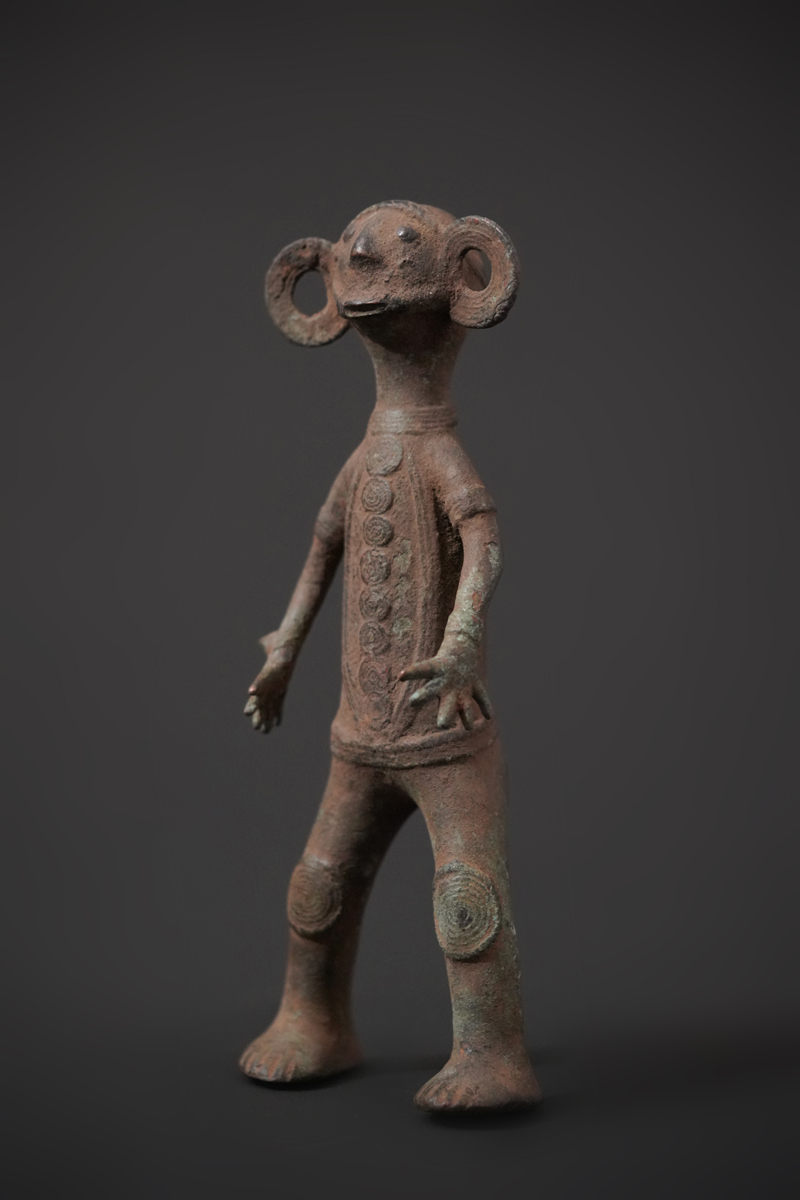|
A female Tiv bronze statue in an interesting position suggesting movement by the special hand and feet position, round ornaments on the knees, the ears and on the torso; beautiful patina. According to Neyt (1985: 161), the "Tiv played a predominant role in the history of the Benue State, and in that of Nigeria itself [...]. When they arrived at the end of the XVIIth and early XVIIIth century, they deeply affected the life and relationship among the peoples living on both sides of the Benue [River]." Tiv statuary has an underlying magic meaning. The figures are not representations of ancestors but of tutelary guardians. The largest statues, the lhambe figures, have been categorized into two styles: the "naturalistic style" and the "post style". See Neyt (1985: 178 et seq.) for further discussion. Tim Chappel and Klaus Piepel, have published a comprehensive study on the material culture of the Verre people. The study “Surviving Works: context in Verre arts“, is based on early collections of Verre artifacts by the German explorer Leo Frobenius (1912), collections of such objects by Tim Chappel for the Nigerian museum in Jos (1966 – illustrated above), collections of Danish missionaries and objects in private collections. The focus of the study lies on the numerous brass items the Verre have produced for ritual purposes and adornment for themselves and for neighbours, and includes a catalogue raisonnée. sold |
 photo: wolfgang-jaenicke.com, for more information, please write us an e-mail with the identification number of the photo identification no. BBC16219.jpg |